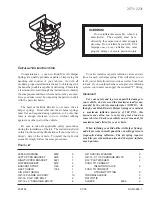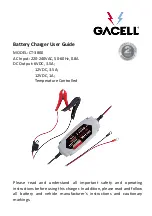
Snow chains
G
WARNING
If snow chains are installed to the front
wheels, they may drag against the vehicle
body or chassis components. This could
cause damage to the vehicle or the tires.
There is a risk of an accident.
To avoid hazardous situations:
R
never install snow chains to the front
wheels
R
always install snow chains in pairs to the
rear wheels.
G
WARNING
If you drive too fast with snow chains moun-
ted, they may snap. As a result, you could
injure others and damage the vehicle. There is
a risk of an accident.
Observe the maximum permissible speed for
operation with snow chains.
Observe the country-specific laws and regula-
tions for operation with snow chains.
!
Check the snow chains for damage before
mounting them. Damaged or worn snow
chains may snap and damage the following
components:
R
wheel
R
wheel housing
R
wheel suspension
For this reason, you must use only snow
chains that are free of defects. Observe the
manufacturer's mounting instructions.
!
Vehicles with steel wheels: if you mount
snow chains on steel wheels, you may dam-
age the hub caps. Remove the hub caps from
the relevant wheels before mounting the
snow chains.
Snow chains increase traction on roads in wintry
conditions.
For safety reasons, Mercedes-Benz recom-
mends that you only use snow chains or traction
aids which have been approved for Mercedes-
Benz vehicles. The snow chains or traction aids
must be of class U or meet the SAE type U
specification.
Information about snow chains can be obtained
from any Mercedes-Benz Commercial Van Cen-
ter.
When mounting snow chains, please bear the
following points in mind:
R
Snow chains cannot be mounted on all
wheel/tire combinations. When mounting the
snow chains, note the permissible tire and
snow chain dimensions. Observe the restric-
tions on the use of snow chains under
"Wheel/tire combinations" (
Y
page 292).
R
Mount snow chains only in pairs and only to
the rear wheels. Observe the manufacturer's
mounting instructions.
R
Only use snow chains when the road is cov-
ered by a layer of snow. Remove the snow
chains as soon as possible when you come to
a road that is not snow-covered.
R
The use of snow chains may be restricted by
local regulations. Observe the appropriate
regulations before mounting snow chains.
R
When driving with snow chains installed, do
not exceed the maximum permissible speed
of 30 mph (50 km/h).
R
Check the tension of the chains after a dis-
tance of approximately 0.5 miles (1.0 km).
You may wish to deactivate ESP
®
when pulling
away with snow chains installed (
Y
page 65).
This allows the wheels to spin in a controlled
manner, achieving an increased driving force
(cutting action).
Tire pressure
Tire pressure specifications
Important safety notes
G
WARNING
Underinflated or overinflated tires pose the
following risks:
R
the tires may burst, especially as the load
and vehicle speed increase.
R
the tires may wear excessively and/or
unevenly, which may greatly impair tire
traction.
R
the driving characteristics, as well as steer-
ing and braking, may be greatly impaired.
There is a risk of an accident.
Tire pressure
271
Wheels
and
tires
Z
















































